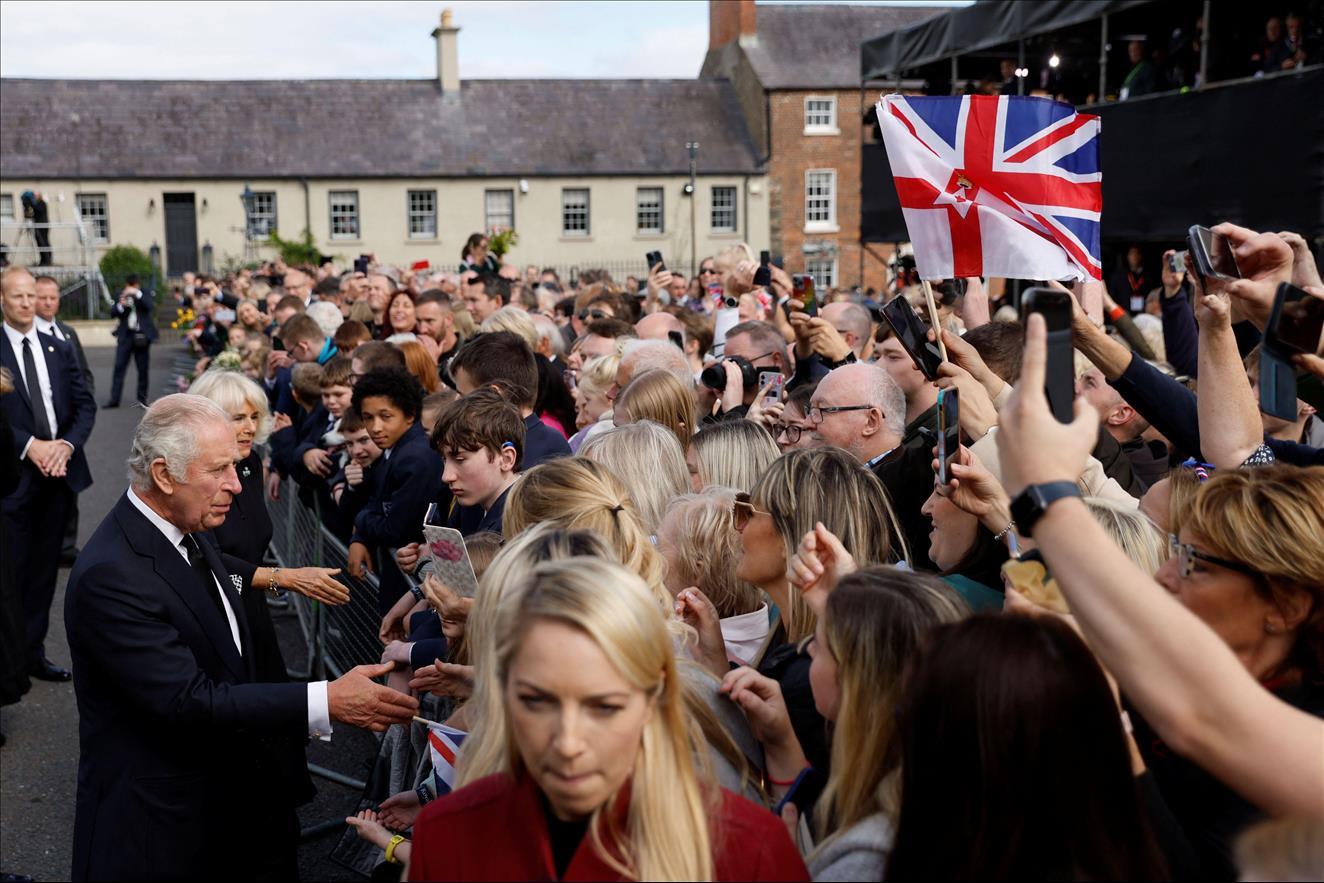
From Queen Elizabeth To King Charles: How Northern Ireland's Unionists Feel About The Monarchy
Monarchism is embedded in Northern Ireland's Ulster unionist identity. There is probably no such thing as a“republican unionist”. Many unionists descend from Protestant settlers from Britain who colonised Ireland four centuries ago. Loyalty to the monarch was an essential qualification for those making the journey, and the basis of that loyalty was the Protestantism of the crown, which provided a bulwark against the Catholicism of the Irish and much of Europe.
As Britain's global reach grew, Protestants in Ireland shared in what was believed to be the God-ordained prosperity and power of the empire. As Irish nationalism grew in the late 19th century, Protestants clung to the union with Britain to avoid absorption into what they feared would be a hostile all-Ireland state. To this day, unlike the many people around the world who see the British monarchy as a symbol of oppression, unionists view it as the embodiment of their political and religious liberty.
After the partition of Ireland in 1921, as James Loughlin writes in his history of the British crown in Ireland,“continued Unionist anxieties about constitutional security put a primacy on an enhanced identity with the monarchy”. Royal visits were used by the unionist government to legitimise their regime and affirm, for people at home and in Britain, their rightful place in the UK.
In Queen Elizabeth, unionists found a strong supporter. At her coronation in 1952, apparently at her wishes, war-time generals, aristocrats and politicians from Ulster held prominent ceremonial functions. Royal honours were bestowed on Northern Ireland subjects. Two swans were donated to Portadown.
Charles meets local young people on his first visit to Belfast as king. Alamy/Reuters
But as Loughlin argues, royal endorsement merely stoked unionists' complacency about their unjust practice of government. That practice was unsustainable and ultimately disintegrated amid the violence of the Troubles which began at the end of the 1960s.
In that conflict, unionist or“loyalist” paramilitaries were imprisoned in droves by the very state for which they were fighting. Their fidelity to the Queen but not her government led to them being described, in the title of a classic 1977 book on Ulster loyalism, as Queen's Rebels .“Their only crime was loyalty” went a loyalist slogan.
After the TroublesIn the peace process era, royal paraphernalia was inevitably drawn into Northern Ireland's cultural battles. Unionists believed that republicans and nationalists wanted to eliminate all monarchical trappings, as had happened in the Republic of Ireland. The proposal made in 1999 by the Patten Commission on police reform to remove the title“Royal Ulster Constabulary” from the police and the crown symbol from the police badge met with universal unionist anger. Nationalists countered that the equality mandated by the 1998 Good Friday Agreement meant that British cultural ascendancy had to end.
Today, few unionists would point to the Protestantism of the monarchy as the foundation of their political allegiance. That said, Queen Elizabeth's Christian faith, expressed especially in her Christmas speeches, enhanced her personal appeal within the unionist community where there remains an affinity with Protestant evangelicalism and a respect for public piety.
While the Queen's death has been deeply felt in unionist areas, Northern Ireland's royalists and loyalists will be reassured by King Charles's promises of continuity with his mother's approach to the role. The Queen will remain in the unionist imagination, along with other figures from the past, as an exemplar and beacon of their Britishness.
But rather than being an unyielding symbol of continuity, the monarchy will reflect changing political circumstances. King Charles is at ease in the Republic of Ireland and appears unperturbed by the rise of Sinn Féin in the North (he actually seemed to congratulate Sinn Féin on becoming the largest party when he visited Northern Ireland in the days following the Queen's death).
King Charles meets Michelle O'Neill, vice-president of Sinn Fein. Alamy
While footage of the Queen's historic 2011 visit to Ireland has been replayed again and again, a less remembered but just as potent episode was the visit of the then Prince Charles to Mullaghmore in Co. Sligo in 2015. He attended a service of reconciliation, shook hands with Irish republican leader Gerry Adams, and went to the location where his great uncle Lord Mountbatten , with whom he was close, was killed by the IRA in 1979. His visits to the Republic have become routine.
Meanwhile, unionists are reluctant to recognise the Irish identity of nationalists in Northern Ireland and to act as deputy to a Sinn Féin first minister since republicans' success in May's Assembly election. Their attitudes towards the Irish government have hardened since Brexit. In a future referendum on Irish unity, unionists must maximise the electorate's identification with the UK. This suggests that emulating the generosity towards traditional enemies shown by their revered late queen and her successor would be unionists' most effective political strategy.

Legal Disclaimer:
MENAFN provides the
information “as is” without warranty of any kind. We do not accept
any responsibility or liability for the accuracy, content, images,
videos, licenses, completeness, legality, or reliability of the information
contained in this article. If you have any complaints or copyright
issues related to this article, kindly contact the provider above.


















Comments
No comment